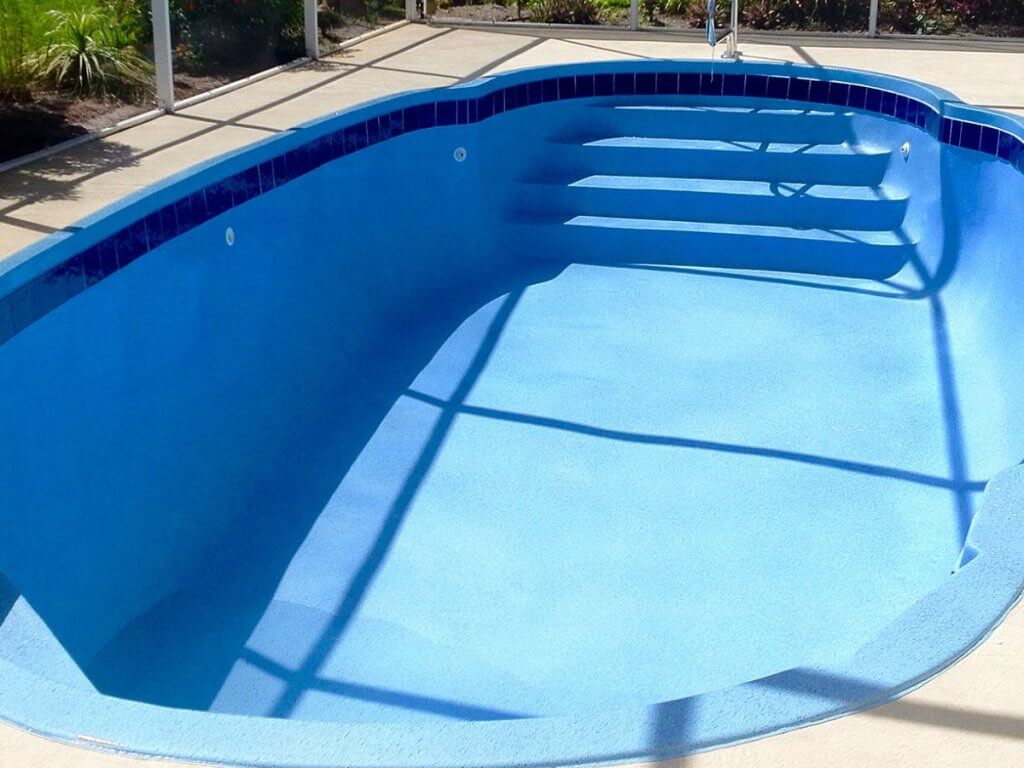Maintaining a beautiful pool can require a good deal of maintenance at times, including occasionally painting the pool. Deciding it’s time to take the leap and actually paint your pool can feel like a big decision, but what about the decisions following that? Unfortunately, a few additional decisions must be made for your pool painting job, including who will do it and, more importantly, what paint will do the job best. You have options for which type of paint to use and each type certainly has its pros and cons. Read on to learn more about which type of pool paint might be best to keep your backyard pool paradise looking clean and fresh.
About Pool Paint
Let’s get back to the basics of pool paint before diving in too deep. Pool paint is a staple for inground swimming pools, as it helps them to look smoother and cleaner. Pool paint can help your pool stand up to tough environments, including the regular UV, heat, and chemicals it will inevitably be exposed to. It is the most affordable way to finish a pool and perhaps one of the more versatile ways to finish it, as well. We’ll discuss three main types of pool paints and pool paint primers below: epoxy, rubber, and water-based acrylic.
Types of Pool Paint
The type of pool paint you should select for your pool largely depends on what type of finish your pool has. Plaster, cement, and fiberglass pools, for example, all handle the types of pool paint differently. Different types of pool paints have varying levels of resistance to chemicals and different expected times between applications. The various paints also have different looks and feel to them when applied properly. If these factors feel a bit overwhelming, don’t worry! We’ll discuss some benefits and key statistics of each type below that will help put you well on your way to a smooth, gorgeous swimming pool.
Epoxy Pool Paint
Epoxy pool paint is one of the strongest and most durable pool paint primers on the market. Similar to a craft epoxy, it cures into a tough, plastic-like surface that resists wear and tear. When applied properly, one application can last five to seven years. The biggest downside is that it can only be applied to concrete or previously epoxied pools. For the right surface, however, epoxy pool paint primers are great for many reasons, including the following:
● They are an economic option for many pool owners, both in the upfront cost and the amount of time it lasts.
● Epoxy creates a very smooth surface due to the thickness of the applied liquid.
● Epoxy pool paints and epoxy pool paint primers come in a variety of colors that can suit the needs and wants of any pool owner.
Rubber Pool Paint
Rubber pool paints are another great option for those looking for a smooth finish. Though it’s a bit more of a legacy material for pool surfacing, it is still used due to its extreme durability. The downside of rubber paint is often seen to be the price and amount of time required to dry (seven days). If you have the time, rubber pool paint can be a great option for you for many reasons including:
● Rubber paints are tried and true. Pool owners have been refinishing their pools with rubber-based pool paints for a long time, proving the efficacy of the finish.
● Rubber paints are a fairly economic option, lasting between two to four years when applied properly.
● Rubber-based paints are also easier to keep clean due to their smooth coat.
Water-Based Acrylic
Water-based acrylic paints are the jack of all trades when it comes to pool paints. As it can be applied on any surface, including other pool paints, it can be an easy decision for those with complicated pool paint histories. Unfortunately, acrylic pool paints last only for one to two years. If you are alright with painting every few years, acrylics may be a great choice for you for the following reasons:
● Acrylic-based paints are the cheapest of the paint options.
● Water-based acrylic paints dry within three days, meaning less time waiting and more time swimming.
● This paint is easier to apply than other paints, especially since it requires no mixing and can be applied over surfaces that are not completely dry.
Let’s Get Started
Though the different types of pool paints and their respective benefits can be a bit overwhelming to dive into, each certainly has its pros for your pool specifically. Our team at Aquaguard 5000 can help advise you on the next steps in getting the right paint type and application. If you’re ready to get your pool looking fresh and smooth again, contact us today to take the first step. We’d love to meet you and start planning this project together!








